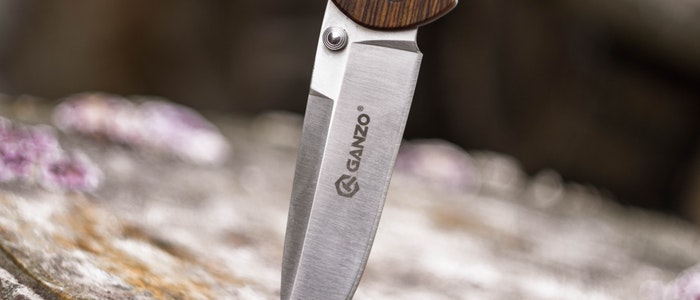It has only been two hundred years since modern medicine has advanced enough to understand infections, and exactly how they operate. This advancement of sterilization and disinfecting over the past hundred years have taken a leap forward. Gone were the days of cutting with rusty knives and with dirty hands. For many, however, knowing how to sterilize is seldom taught or learned. Although this simple action is an incredibly important, due to many peoples ignorance this part is often forgotten.

It may be apparent that maybe hunting with a dirty knife and then cutting through your dinner may not be the safest plan. It is not difficult to quickly disinfect with what you have on hand, and then continue preparing your dinner with a clean knife that may do wonders for your life expectancy. Under the possibility of future dire societal conditions, how to sterilize a knife can become a lifesaving skill to learn and master.
What type of health problems can be found in the wilderness from not cleaning your knife?
When in the wilderness, there is no one holding your hand. You can fall to illness, malnutrition, and fatigue. Due to these issues, having even a small type of advantage will be immensely helpful. So when the chance comes to limit your possibility of contracting a disease or other potential sickness, it might be good to watch what you cut with.
Most people tend to overlook the possibility of getting sick from your knife while in the wilderness by virtue of how rare it is to find a case like that in modern day civilization. For instance, you can technically catch a virus from a dirty fork or spoon from a restaurant, but it seldom ever happens. This changes in the wilderness, as there are no artificial barriers to protect you from falling ill.
While there are many dangerous types of diseases that can come from not correctly sterilizing a knife, one of the worst originates from a knife with any type of rust on it. The rust is the leading cause to one of the most terrifying diseases you can encounter in any situation.
This is known as “Clostridium tetani”, or more commonly called Tetanus. This bacterium has a nasty effect of causing Lock Jaw, a disease that slowly causes your entire body to become locked up, unable to move. Eventually, this will reach your heart and lungs, causing you to go into cardiac arrest or lose the use of your lungs. Due to the severity of this infection, there is no treatment that can be done. This is usually the biggest issue found in not sanitizing your knife, and allowing rust to develop.
Other health hazards are much less severe, but can still lead to serious problems. Such as botulism, brought on by not sterilizing utensils or items that have come in contact with the bacterium “Clostridium botulinum”, commonly found in fermented meats and certain vegetables. This can prove to be detrimental if left untreated.
What are the different ways to sterilize my knife?
While home sterilization is the easy dip in boiling water or atop a stove fire. There are actually a lot of different ways of sterilizing an average knife. From a medical view, the most effective would have to be alcohol, hydrogen peroxide, or Betadine. Due to the fact these disinfectants kill bacteria, it should be good to note the whole knife point should be covered and then sterilized with a clean cloth soaked in a disinfectant. If you needed to clean and disinfect a knife entirely, the knife can also be left submerged in a disinfectant for around twenty minutes for a near perfect sterilization.
Surprisingly, water can be used to disinfect knives as well. As seen in a study, the “Comparison between sterile saline and tap water for the cleaning of acute traumatic soft tissue wounds.” It seems that normal tap can be used in place of a saline disinfectant, if necessary. So having water for cleaning and disinfecting with it can be useful and effective.
Heating up a knife can also be an effective way of sterilizing a knife, as after 248 degrees Fahrenheit, almost all types of germs die. The knife would be left until it reaches a red glow, this means that the knife has gained enough heat to excite the metal into creating light. This can be done with an open flame, by leaving it on the edge of the flame or slightly above the flame.
Obviously, holding the knife is not an option due to the heat level generated so it might not be a good idea to touch it bare handed. So having it held by something else or using a heavy glove would prove useful. But keep in mind, you want to utilize the knife as fast as possible as when it loses its red glow it can become subject to contamination. The knife can be used and still be effective until it loses its red glow and even for a bit of time after that.
What is the most practical way to sterilize a knife?
In a survival situation, the best way to conceivably clean a knife is by using water to boil away the bacteria. This can be done easily by having a simple pot put over coals filled about half way with filtered water. When the water begins to steam, leave it for a full 20 minutes. This will ensure that all of the bacteria would have been killed off.
Ideally after, use a disinfected cloth to finish cleaning the knife. This is the most practical choice in a survival situation due to how easy it can be to set up and clean up. However, it should be taken into account that unless your knife is stainless steel it will degrade at a much faster rate and have a much higher chance of developing rust when using water as a disinfecting agent.
When should I sterilize my knife?
Every time you are using a knife, think, “Would I want to disinfect this knife before or after this action?”. This can ensure you will not wear out your knife faster, or use up time waiting to disinfect a knife that did not need to be in the first place. So keep in mind when you are set to clean a knife, it should be done when you are either about to use it or after you’ve finished using it.
Conclusion
Whether it be in any situation it is always best to be safe, not sorry. Disinfecting and sterilizing your knives can very well mean the difference between life and death. So play it safe when you need to, and be sure to use your knife as it is meant to be used.

